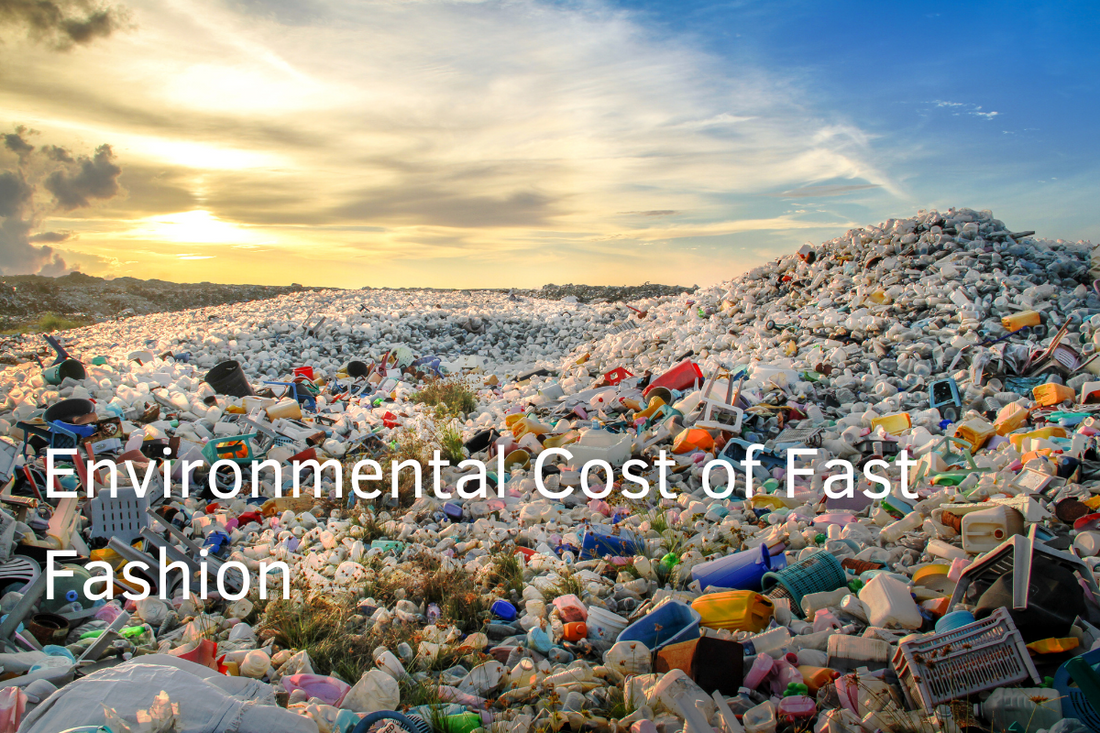
The Environmental Impact of Fast Fashion: Why Choosing Sustainable Fabrics Makes a Difference
Share
Let's talk about something that's been making waves in recent years – the fashion industry's dramatic transformation. You know how we've all gotten used to cheap, trendy clothes that seem to pop up in stores every week? That's fast fashion, and while it might be great for our wallets in the short term, it's actually causing some serious problems for our planet. More and more people are starting to realize this and turning to sustainable options like linen. Let me break down why this matters so much.
The Fast Fashion Cycle: A Never-Ending Story of Waste
Think about how often you see new styles in stores – it's crazy, right? These days, fashion brands are pumping out new collections at lightning speed, sometimes even daily. We've fallen into this habit of wearing things just a few times before moving on to the next trend, and it's creating a massive waste problem.
Here's what's really going on:
First off, the fashion industry is making way more clothes than we could ever wear – we're talking about 100 billion garments every year. That's mind-boggling! A lot of these clothes never even get sold and end up straight in landfills.
Then there's the whole issue with synthetic materials. You know those comfy polyester shirts and stretchy nylon leggings? Every time we wash them, they release tiny plastic particles into our water systems, which eventually make their way into our oceans and harm marine life.
And let's be honest – many of these fast fashion pieces aren't made to last. They're designed to fall apart after a few wears, pushing us to buy more. It's a vicious cycle that's filling up our landfills with over 92 million tons of textile waste each year. The worst part? Most of this stuff won't break down for hundreds of years and leaches harmful chemicals into our soil and water in the meantime.
The Hidden Costs: Water, Energy, and Chemicals
The problems don't stop at waste. Making all these clothes takes a massive toll on our resources. Did you know that the fashion industry is the second-biggest water consumer in the world? Here's a shocking fact: it takes about 2,700 liters of water to make just one cotton T-shirt. That's enough water for someone to drink for two and a half years!
The industry is also a major polluter. About 20% of global wastewater comes from dyeing and finishing textiles. These toxic chemicals often end up in rivers and streams, harming wildlife and ecosystems. And when it comes to carbon emissions, fashion is responsible for 10% of all global emissions – that's more than all international flights and maritime shipping combined.
The Human Side of the Story
While we're talking about impact, we can't ignore what's happening to the people making our clothes. Many fast fashion brands rely on workers in developing countries who often face dangerous working conditions, unfair wages, and incredibly long hours. They're exposed to harmful chemicals and dyes in poorly ventilated factories, all so we can have cheap clothes.
Why Sustainable Fabrics Are Game-Changers
This is where sustainable fabrics like linen come into the picture. Linen is pretty amazing when you think about it – it comes from the flax plant and is one of the most environmentally friendly fabrics out there. Unlike cotton, flax doesn't need much water to grow – it mainly relies on rainwater. When you're done with linen clothing, it completely breaks down in just weeks, unlike synthetic fabrics that stick around for centuries.
What's really cool about linen is that it barely needs any pesticides or fertilizers to grow, and it's incredibly strong – meaning your clothes last longer. The flax plants even help fight climate change by absorbing carbon dioxide while they grow. Plus, linen works great in any weather, keeping you cool in summer and warm in winter.
Making Better Choices
While fast fashion is still dominating the market, more and more people are starting to push back. We're seeing a growing movement of conscious consumers who are choosing quality over quantity. Companies like Rimore are leading the charge by focusing on sustainable materials like pure linen, showing that fashion can be both stylish and environmentally responsible.
What Can We Do?
It's pretty simple, really. We can start by supporting brands that care about sustainability and ethical practices. Look for certifications like GOTS and Fair Trade. Try building a smaller wardrobe with versatile pieces that last longer. Take good care of your clothes – wash them less often, use gentle detergents, and fix them when they need repair instead of throwing them away.
When you're done with clothes, donate them or find ways to recycle them. And don't forget to spread the word – the more people who understand these issues, the better chance we have of making real change.
The Bottom Line
The fashion industry's impact on our environment is huge, but it's not too late to turn things around. Every time we buy clothes, we're voting with our wallets for the kind of world we want to live in. This year, let's try to make better choices – for ourselves and for the planet. After all, if we all do our part, we can help transform fashion from part of the problem into part of the solution.
